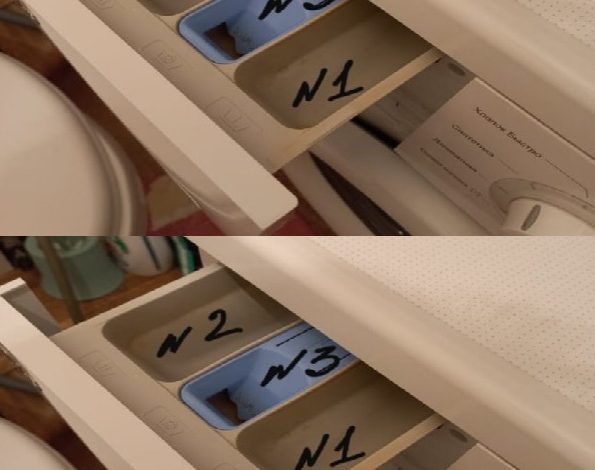It turns out that not everyone knows why 3 compartments are needed in a washing machine.

A washing machine has become an essential appliance in our homes, but many of us don’t fully understand all its functions. I didn’t know about this until recently and now I want to share what I’ve learned. Let’s figure out why there are 3 compartments in a washing machine and how to use them effectively.
ADVERTISEMENT
Understanding the Compartments
Overview of the 3 Compartments
If you take a close look, you’ll notice the compartments in your washing machine are labeled. Typically, the outer compartments are marked with numbers, while the middle one might have a snowflake design. However, these labels can vary depending on the brand.
ADVERTISEMENT
1. First Compartment: Prewash
The first compartment is often labeled with a Roman numeral I, Arabic 1, or letter “A.” This is used for the prewash phase. You should only add detergent here if your wash cycle includes a prewash.
ADVERTISEMENT
2. Second Compartment: Main Wash
The second compartment is marked with a Roman numeral II, Arabic 2, or letter “B.” This is where you put detergent for the main wash. This compartment is used in every cycle unless you add detergent directly to the drum.
3. Third Compartment: Fabric Softener
The third compartment usually has an asterisk or flower symbol. It’s designed for fabric softeners and conditioners. Add your softener here before starting the rinse cycle. Using fabric softener is optional but recommended for a softer finish.
The Importance of Compartmentalization
Why Separate Compartments?
The compartments are designed to keep detergents and softeners separate until they are needed during different phases of the wash cycle. This prevents mixing and ensures that each cleaning agent is used at the optimal time for maximum effectiveness.
Washing Modes and Their Differences
Various Washing Modes
Modern washing machines offer many washing modes, though some differences might be more about marketing than actual functionality.
Everyday Mode
This is the go-to mode for most of your daily laundry needs. It handles a variety of fabrics and soil levels effectively.
Mixed Mode
This mode is suitable for loads with mixed fabric types, balancing the needs of different materials in one wash.
Delicate Mode
Designed for delicate fabrics such as silk and lace, this mode uses gentle agitation and lower temperatures to protect sensitive items.
Wool Mode
Specifically for wool items, this mode uses minimal agitation and moderate temperatures to prevent shrinkage and damage.
Fast Mode
A quick wash cycle designed for lightly soiled items that need a fast turnaround.
Choosing the Right Washing Temperature
Temperature Guide
Choosing the correct washing temperature for different fabrics is crucial for maintaining their quality and longevity.
Cold Water (Up to 30°)
Use cold water for silk, wool, and other delicate items. Cold water helps prevent damage to these sensitive fabrics.
30°-40°
Jeans and synthetic down jackets should be washed at 30-40 degrees to prevent fading and shape loss.
40°-50°
Lightly soiled linens, colored cotton, and synthetic items can be washed at 40 degrees. Some synthetics, like nylon and Lycra, can handle temperatures up to 50 degrees.
50°-60°
For fabrics made from a mixture of cotton and synthetics, choose a temperature between 50 and 60 degrees. This range is suitable for moderately soiled items.
60°-95°
High temperatures, up to 95 degrees, are ideal for disinfecting and washing heavily soiled cotton and linen items, such as bed linens, towels, and baby clothes.
Understanding Drum Speed
Drum Speed Settings
Washing machines typically allow you to set the drum speed from 400 to 1000 revolutions per minute (RPM). The speed you choose can impact the washing effectiveness and fabric care.
400-600 RPM
This setting is suitable for delicate fabrics like fine wool, polyester, silk, and cotton. It offers a gentle wash comparable to manual washing.
800-900 RPM
Effective for synthetic materials, this speed provides a good balance of cleaning power and fabric care.
1000 RPM
Best for dense fabrics and heavily soiled items like jeans and mixed fabrics. This highly intensive setting efficiently removes dirt from these materials.
Conclusion
Understanding the different compartments and washing modes of your machine can significantly improve your laundry results. By choosing the right settings, you can ensure your clothes are cleaned effectively, maintained well, and even extend their lifespan. Knowing these features also helps save energy and prevents potential damage to your items.




